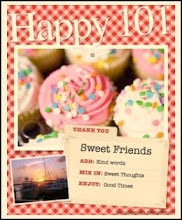 Just when I thought I had this recycling thing down pat, something new comes up. A problem. A big problem. Sheesh! What's a pug to do?
Just when I thought I had this recycling thing down pat, something new comes up. A problem. A big problem. Sheesh! What's a pug to do? Everypug knows to look on plastic containers for a recycling symbol. Numbered 1 - 7, the number indicates the type of plastic the product is made from. Please check out my post on recycling symbols here if you need a refresher. The real confusing thing is that plastic is not always labeled. Even though some pugs think if it's not numbered that means it can't be recycled, this is not the case. Confused? Me too.
To add to the confusion, Mom read me an article today about how some plastics are being improperly labeled. What? They are labeled as # 1 PET, but they aren't really #1. Two major plastic recycling associations noticed this mislabeling recently and have come forward to alert consumers.
#1 - PET or PETE (polyethylene terephthalate) is found in so many products that you probably use a number 1 plastic container every day. Soft drink bottle, mouthwash bottle, peanut butter containers, salad dressing and vegetable oil containers, and even ovenable food trays are made from this plastic. Commonly used for single-use beverages due to being inexpensive, lightweight, and easy to recycle, it poses a low risk of leaching breakdown products. This plastic can also be recycled into so many things.
But back to the questions surrounding mislabeling: Is this a problem? Why are manufacturers mislabling plastic? Is it intentional? And why is it happening now?
First things first. Mislabeled plastic is an issue because it creates a huge contamination problem in the recycling stream. If something is labeled #1 but is really #6 then it can't be recycled in the same manner as #1. Plastics contain different chemical compositions and not all are created equal. When plastics with different melting points combine with the PET stream, it thickens to such a consistency that it renders the stream useless. Recyclers are the key to the recycling process and if they cannot meet the demand that's been created for recycling PET due to contamination, then we all suffer.
Can you believe that recycling labels have been imprinted on plastic for 25 years? The plastics industry, which has always been self-policed, has never had to deal with a mislabeling problem until now. There's never been any issue like mislabeling so no outside regulations have been needed. Now two recycling associations involved in bringing this mislabeling to light, the Association of Postconsumer Plastic Recyclers (APR) and the National Association for PET Container Resources (NAPCOR), say several manufacturers are improperly labeling plastic on purpose.
But why is this happening now? The experts think that it is probably due to the economy but they don't really know for sure. Steve Alexander, executive director of APR, explains that in states like California the price of manufacturing is often based on the recycling rate of a manufacturer's material. Thus the higher the rate, the less of a fee you pay to put your material into the marketplace. If PET has a higher recycling rate (which it usually does), it may cost manufacturers less to distribute it. Makes sense but only if manufacturers play by the rules.
David Cornell, technical director for APR, tells us that the issue may be one of status. Huh? #7 gets such a bad rap because it's the catch-all category for plastic that is hard to recycle. Manufacturers don't want to be associated with a product that gets a bad rap so in an effort to avoid negative press, they may be mislabeling their goods as #1.
Consumer awareness and pressure on manufacturers is the first step in stopping the mislabeling. This issue isn't a legal matter yet, but it could be soon. Even though Alexander could not comment on the specific companies accused of mislabeling, he did say that if the issue goes to the Attorney General the companies will be revealed. The action of mislabeling is just wrong and must be stopped.
So what can you do? Alexander says to pay attention to the plastic you recycle. He says the best example of plastic mislabeled as PET are bottles with handles. He claims it's virtually impossible to create a PET bottle with a handle, as the material just doesn't support it. So now you know that if you see a plastic bottle with a handle that is labeled #1, it has been mislabeled. Please report any mislabeled plastic to APR because they need consumers' help to address this issue.
I was really bummed by this mislabeling news. I know all of you have been recycling like crazy and I don't want this news to put a damper on the great work you've done. Let's not look at this issue like we're taking a step back in the recycling process, but as an opportunity to learn more about the plastic we recycle. And as a chance to use less plastic since that really is the best solution.





 Look at that refrigerator. There's not a thing to eat in it! Where's the leftover Popeyes? Where's all my cheese? Hello lunchmeat, I'm looking for you. This is why I'm starving. Uh, sorry for freaking out. It's just that I feet that some of my food should be included in the challenge but Mom said we were focusing on human food.
Look at that refrigerator. There's not a thing to eat in it! Where's the leftover Popeyes? Where's all my cheese? Hello lunchmeat, I'm looking for you. This is why I'm starving. Uh, sorry for freaking out. It's just that I feet that some of my food should be included in the challenge but Mom said we were focusing on human food. 




























































